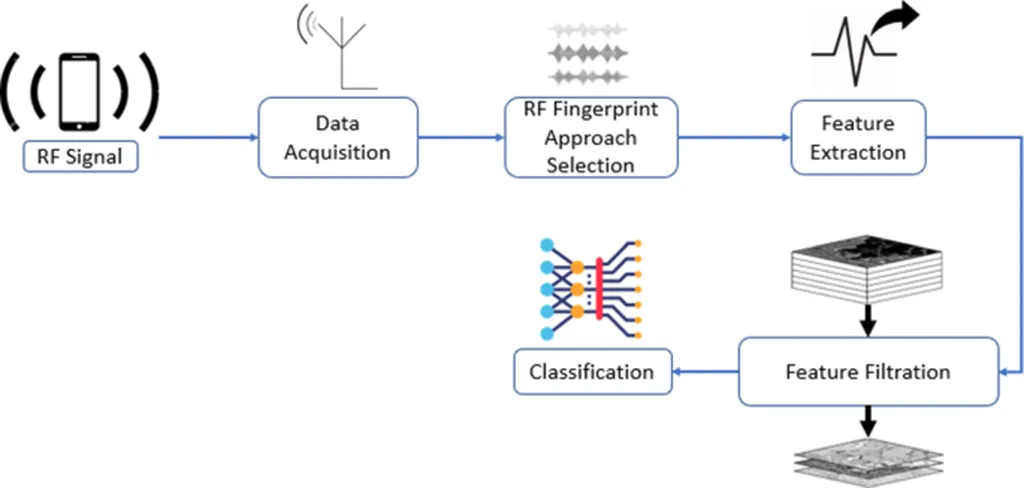Researchers Alex Hiles and Bashar I. Ahmad from the University of Southampton have developed a groundbreaking machine learning framework that promises to revolutionize radio frequency (RF) fingerprinting, a critical tool in both defence and civilian applications. Their work, published in a leading scientific journal, introduces a generic, data-driven approach to RF fingerprinting that is more flexible, efficient, and accurate than traditional methods.
RF fingerprinting involves identifying unique characteristics in the signals transmitted by RF emitters. These fingerprints are subtle but detailed enough to enable specific emitter identification (SEI), a crucial task in signal intelligence, electronic surveillance, and physical-layer authentication of wireless communication devices. The researchers point out that while RF fingerprinting and SEI have a long history, traditional methods are often labour-intensive, inflexible, and limited to specific emitter types or transmission schemes. In contrast, their machine learning-enabled framework can automatically learn intricate fingerprints from raw data, delivering superior performance across a range of tasks and application areas.
The researchers’ framework is designed to be inclusive, supporting various downstream tasks such as emitter data association (EDA) and RF emitter clustering (RFEC). By formulating each task as an RF fingerprint-dependent task, the framework ensures that it can be applied to a wide range of transmission types and scenarios. The versatility of the framework is demonstrated through several use cases using real RF datasets. These examples illustrate the framework’s potential in diverse application areas, including spaceborne surveillance, signal intelligence, and countering drones.
One of the most significant advantages of the researchers’ framework is its ability to adapt to different scenarios and tasks without the need for extensive manual configuration. This flexibility is particularly valuable in the defence and security sector, where the ability to quickly and accurately identify and track RF emitters can be crucial. For instance, in signal intelligence operations, the framework could help analysts rapidly identify and classify signals of interest, providing valuable insights into adversary communications and activities. Similarly, in electronic surveillance, the framework could enhance the ability to detect and track illicit or malicious transmissions, such as those used by drones or other unmanned systems.
Moreover, the framework’s ability to support physical-layer authentication could have significant implications for cybersecurity. By enabling devices to be authenticated based on their unique RF fingerprints, the framework could help prevent unauthorized access and other cyber threats. This could be particularly valuable in critical infrastructure protection, where ensuring the integrity and security of wireless communications is paramount.
In conclusion, the machine learning framework developed by Hiles and Ahmad represents a significant advancement in the field of RF fingerprinting. Its flexibility, efficiency, and accuracy make it a valuable tool for a wide range of defence and security applications. As the researchers continue to refine and expand the framework, it is likely to become an increasingly important asset in the ongoing effort to secure and protect our increasingly connected world.Read more at arXiv.

